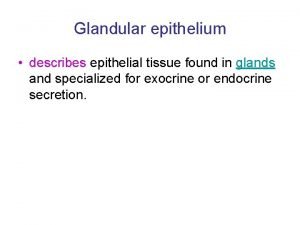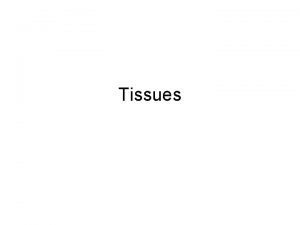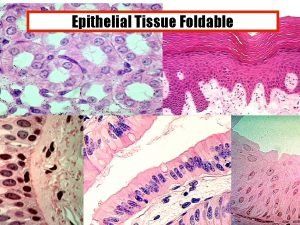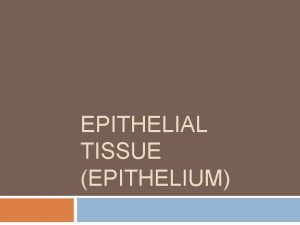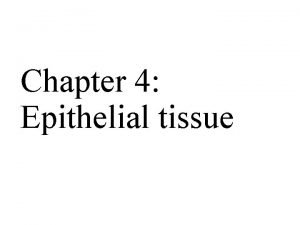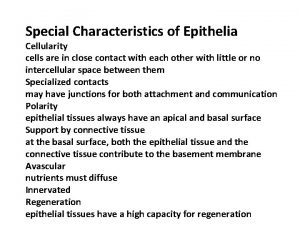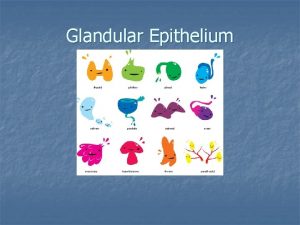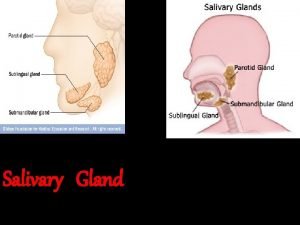Glandular Epithelial Tissue Gland made of one or










- Slides: 10

Glandular Epithelial Tissue

• Gland – made of one or more cells that make and secrete a particular product • Secretion – is the product. • Glandular activity requires the expenditure of stored energy. • Glands are classified as either: – Endocrine – secretes directly into blood and interstitial fluids (ductless glands) and produces hormones. – Exocrine – discharge their secretions into ducts.

3 examples of Endocrine glands Pituitary, Thyroid, Adrenal • Glandular Epth. can also be classified as the Number of cells making up the gland. unicellular – one celled multicellular – many cells • Unicellular glands are scattered w/in epithelial sheets (only one in the body are goblet cells) • Multicellular grow inward or outward from the sheets forming ducts (tube like connections to the epith. sheets. )


Endocrine Glands • Their chemicals are secreted directly into the extracellular spaces, where they enter the blood or lymphatic fluids and go to target organs. • Ex. lining of the digestive system

Exocrine Glands • Much more numerous than endocrine • All exocrine glands secrete their products onto body surfaces (skin) or body cavities by the use of tubes (ducts) • Great diversity: - mucous, sweat, oil, and salivary glands - liver (secretes bile), pancreas (dig. enzymes)

Unicellular vs. Multicellular Exocrine Glands Unicellular – only important one is the goblet cell (shaped like a drinking glass w/stem) Found throughout epth. Linings In humans – secrete mucin (mu-sin) which is a glycoprotein that dissolves in water Once dissolved mucin forms mucus.

Multicellular Exocrine glands • Much more advanced structurally. • They are structurally either simple – ducts not branched compound - ducts are branched • They are also classified by secretory units 1. Tubular - secretory cells form tubes 2. Alveolar – secretory cells form small, flask like sacs 3. Tubuloalveolar – if they have both

Mode of secretion 3 types of Exocrine glands according to secretion. P. 126 book 1. Apocrine - secrete near apex, release by pinching off end. Result: loss of cytoplasm and cell damage Repair is quick ex. Milk- producing mammary glands 2. Holocrine – produces oil to lubricate skin; produced inside cell so rupturing must occur. (self destructive)

3. Merocrine – discharge secretion directly through plasma membrane (done w/o injuring the cell) most numerous type

